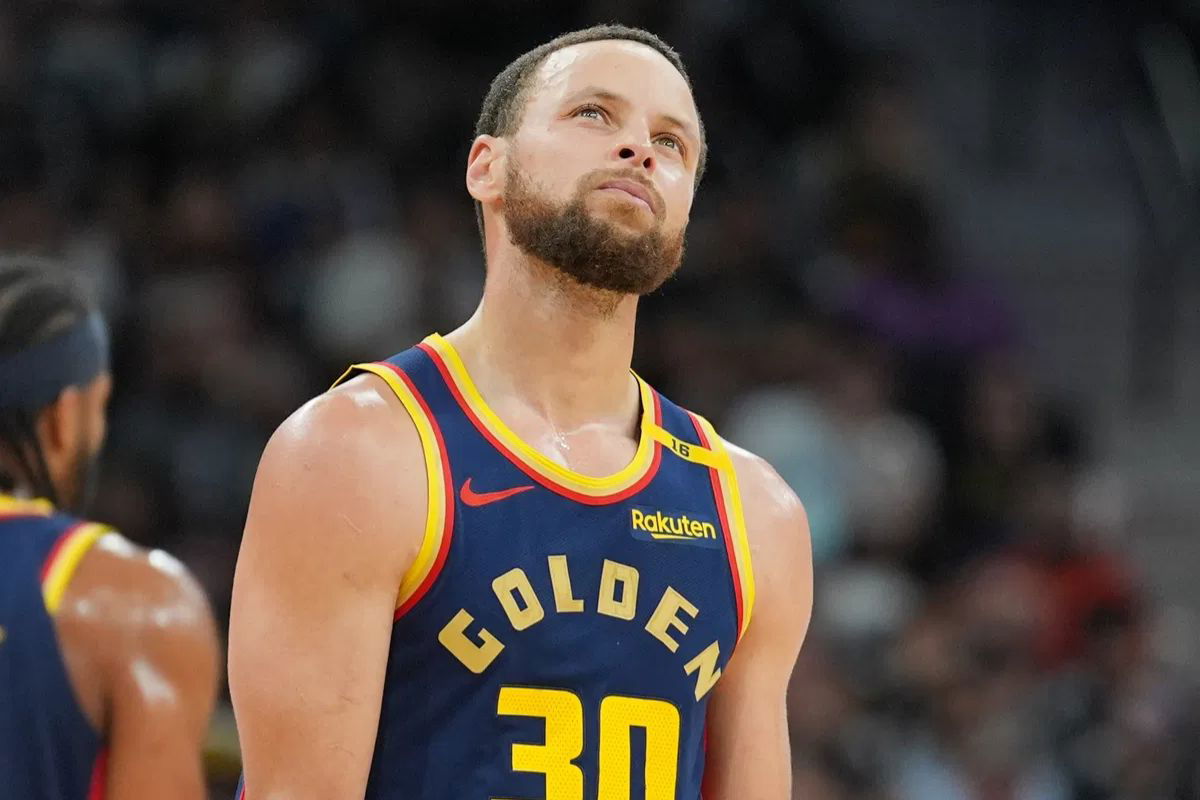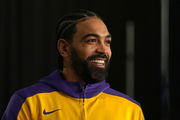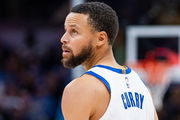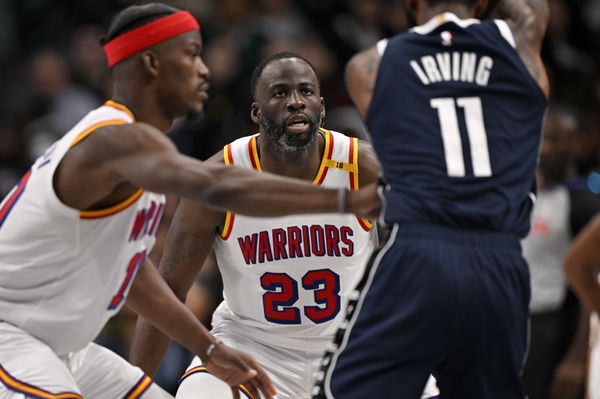
Imago
Mar 30, 2025; San Antonio, Texas, USA; Golden State Warriors guard Stephen Curry (30) looks up in the second half against the San Antonio Spurs at Frost Bank Center. Mandatory Credit: Daniel Dunn-Imagn Images

Imago
Mar 30, 2025; San Antonio, Texas, USA; Golden State Warriors guard Stephen Curry (30) looks up in the second half against the San Antonio Spurs at Frost Bank Center. Mandatory Credit: Daniel Dunn-Imagn Images
No Steph Curry. No offense. No answers. The opening moments at Target Center felt like watching a ship set adrift with no compass. The Golden State Warriors, usually anchored by the gravity of Stephen Curry, looked lost. Their movements were slow. Their passes lacked conviction. Their shots—if you could call them that—floated like prayers into a rim that gave no grace.
Watch What’s Trending Now!
They came in with a 1-0 lead. But more importantly, they came in with questions. Could they win without their two-time MVP? Could the new-look lineup of Butler, Hield, and Podziemski generate enough creation to stay afloat? And most importantly—who would lead when the man who’s always led wasn’t there to save them?
The answer, in the first quarter at least, was no one.
ADVERTISEMENT
Steve Kerr was already deep into the bench by the start of the second quarter, having played 13 players in search of a spark. Brandin Podziemski missed a wide-open layup. Buddy Hield, heroic just 48 hours ago, was a non-factor. Jimmy Butler looked isolated and vocal, trying to rally the troops, but the words fell flat amid the storm. Golden State looked not just out of sync—but untethered.
Then came the stat that punched every Warriors fan in the gut.

Imago
Mar 17, 2025; San Francisco, California, USA; Golden State Warriors forward Jimmy Butler III (10) as a time out is called against the Denver Nuggets during the second quarter at Chase Center. Mandatory Credit: Kelley L Cox-Imagn Images
Golden State had scored just 15 points in the first quarter. That’s their lowest-scoring opening frame in a playoff game since Game 6 of the 2016 NBA Finals—one of the most painful collapses in franchise memory. This wasn’t just a slow start. It was a symbolic unraveling, an echo of eras they hoped they had outgrown. And without Curry? It might not be a one-off. It wasn’t for lack of effort defensively. The Warriors chased Minnesota off the three-point line. They hustled. They rotated. But what good is defensive grit when your offense can’t buy a bucket? Five turnovers, six field goals, and absolutely no rhythm.
ADVERTISEMENT
What’s frustrating for fans is how beatable Minnesota looked early on. Anthony Edwards missed three bunnies. The Wolves didn’t hit their first three until midway through the quarter. And still—Minnesota ended the first up 29-15. That’s not a Timberwolves explosion. That’s a Warriors implosion. It was McDaniels, Conley, and Edwards in transition, turning defense into buckets while the Warriors struggled just to cross halfcourt with purpose. It was a nightmare unfolding in slow motion.
ADVERTISEMENT
It didn’t help that the backdrop to all of this was Steph Curry’s own heartbreak. According to Marcus Thompson, Curry broke down in the locker room after learning of the Grade 1 hamstring strain that would sideline him for at least a week. Steve Kerr was reportedly speechless. Curry, in tears, composed himself, addressed the team, and tried to uplift them. But the damage—physically and emotionally—was done. The leader was gone, and the void was felt immediately.
Curry won’t be back until Game 5 at the earliest. Until then, this Warriors team has to answer the hardest question of the postseason: not whether they can survive—but who they are without him.
Right now, that answer is far from comforting.
ADVERTISEMENT
Curry Isn’t Missing—He’s the Missing Piece
The Golden State Warriors walked into Game 2 knowing they’d have to survive without their sun. By halftime, they weren’t just trying to survive—they were unraveling.
Leave it to TNT’s Stan Van Gundy to nail the moment with brutal clarity: “In a game without Stephen Curry, everybody has to play a different role than what they’re used to.”
He didn’t stop there. “Especially with Jimmy Butler on the bench—the only shot creator they have—now all these other guys are trying to make plays they’re not built to make. And that’s gonna lead to a lot of mistakes.”
He couldn’t have been more spot-on. By the end of the third quarter, the Warriors looked completely disoriented—trailing by 20, staring at an 83–63 scoreboard, and searching for answers that just weren’t there.
ADVERTISEMENT
Steph Curry’s absence has become more than a missing box score line. It’s a fault line that’s cracked the entire offensive structure. The Warriors trailed 56-39 at the half, and every point they managed to scrape together felt like a choreographed struggle. This wasn’t about bad shooting luck. It was systemic decay.
Top Stories
Lakers’ Gabe Vincent Dishes on LeBron James, Luka Doncic’s Sacrifices, Role on the Team and More (Exclusive)

Arrest For Shaquille O’Neal’s Stolen Range Rover Made But More Bad News Awaits

Calls Mount Against NBA Refs After Stephen Curry Wrongfully Punished vs Timberwolves

Caitlin Clark, JuJu Watkins Announce Injury Update After Months of Battle

Lakers Champ Isaiah Rider Breaks Silence On Arrest For Order Violation

Golden State’s motion offense—the ballet of back cuts, slips, and split actions—simply doesn’t function without its engine. Draymond Green, once the orchestrator, now looks like a conductor waving to an empty pit. Without Curry pulling defenders out to 30 feet, spacing has collapsed. Dribble handoffs die midway. Screens feel pointless. Everyone’s half a beat late, unsure whether they’re the option or the decoy.
You could see it in Draymond’s eyes. Four assists by halftime, sure. But with Curry on the floor this season, he averages nearly 11 assists per 100 possessions. Without him, that drops nearly in half. Tonight, he looked less like a point-forward and more like a confused quarterback, cycling through progressions with no open targets. Even Jimmy Butler—who opened with five quick points—spent the rest of the half searching for rhythm in an offense allergic to isolation.
ADVERTISEMENT

Imago
Feb 12, 2025; Dallas, Texas, USA; Golden State Warriors forward Draymond Green (23) and forward Jimmy Butler (10) defend against Dallas Mavericks guard Kyrie Irving (11) during the second quarter at the American Airlines Center. Mandatory Credit: Jerome Miron-Imagn Images
And that’s the other fracture point. Butler wasn’t brought in to be the guy. He was the stabilizer, the closer, the extra grenade in a shootout. But now? He’s the plan. And it doesn’t fit. The Warriors’ system has always rejected alpha scorers who go rogue—it was built on trust, flow, and reads. When Jimmy turns to iso-ball, the movement dies. And when that movement dies, Golden State doesn’t just slow down—it looks lost.
Brandin Podziemski, a fan favorite all year, looked like a deer in headlights. Overwhelmed by length, baited into traps, rushing decisions. He scored six, but had zero assists and more than a few airballs. Warriors fans have seen this story before—young guards thrown into chaos without Curry’s calming gravity. They don’t grow. They freeze.
ADVERTISEMENT
Then came Steve Kerr’s carousel. Thirteen players in one half. That’s not experimentation—that’s whiteboard desperation. Pat Spencer, Gui Santos, TJD… all thrown in like dice. And while Trayce gave a few inspired minutes, the bigger issue is glaring: there’s no true backup playmaker. Everything bottlenecks. Everyone looks at someone else. And no one leads.
But this isn’t just about Golden State.
The Timberwolves smelled blood, and they didn’t hesitate. They opened the game with a 13-0 run, burying three after three and jamming the Warriors’ lane with length. Julius Randle exploded for 16 in the first half. Jaden McDaniels locked down passing lanes. Rudy Gobert didn’t even need to score—he just swallowed space. Even Anthony Edwards, who sprained his ankle and left the game briefly, returned to a roaring crowd and immediate impact.
ADVERTISEMENT
Minnesota had 17 made threes across Games 1 and 2 combined. Eight came in the first half tonight. That’s not coincidence—that’s intent. They attacked early, sensing that without Curry’s scoring surges, Golden State had no real counterpunch. Every push from the Dubs felt like treading water. Every Wolves bucket felt like a wave.
Make no mistake—this wasn’t just a game without Curry. It was a game that exposed what Curry built. The floor spacing, the tempo, the unselfishness—it was never theoretical. It was always him. You saw it in Draymond’s fifth technical. You saw it in Butler’s silence. You saw it in the hesitance of the bench.
Golden State has done the impossible before. But if tonight’s first half was any indication, they’ll need more than belief. They’ll need identity. And right now, it’s sitting on the bench in street clothes.
ADVERTISEMENT
ADVERTISEMENT
ADVERTISEMENT

